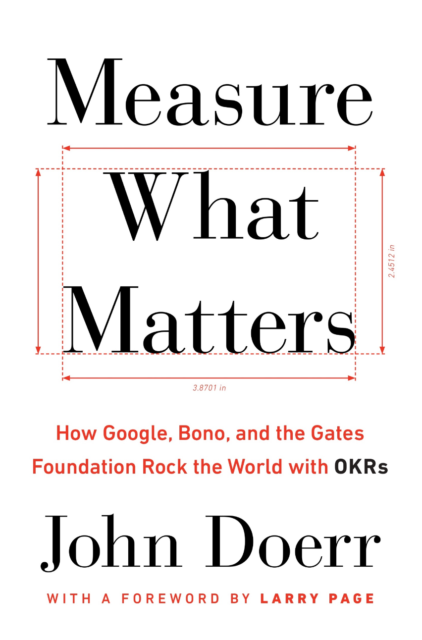OKRs vs KPIs – How to use the OKR framework to improve your team?

To be honest, I have never been a huge fan of KPIs. In every corporate culture, there’s a notion that every employee should have a list of KPIs to achieve in a certain period. And we tried to have some kind of KPIs in Kontra, and we failed. But last year, I came to a much better system, and so far, it works really well for us at Kontra. For us, the OKRs vs KPIs debate is over.
What are KPIs, and why I didn’t like them?
KPI stands for Key Performance Indicator and is a measurable value that indicates how effectively an individual, team, or organization is achieving its goals. KPIs are used to track progress and assess performance over time. They serve as benchmarks for success and help align actions and strategies with desired outcomes. KPIs vary across industries and objectives but should be specific, measurable, achievable, relevant, and time-bound (SMART). By monitoring KPIs, businesses can make informed decisions, identify areas for improvement, and measure the success of their efforts.
ChatGPT
I had a problem. What KPIs should our designer have? Or a programmer? A number of lines written? For many positions in our organization, we just couldn’t measure performance with a number. KPIs are ideal for salespeople but not for all positions at Kontra. I sat with my cofounder Petar sometime in September 2020 and decided to ditch KPIs and use a “go with the flow” system. Let’s all do our best and believe it will work out. Amazingly, that’s what happened. We grew 100% in 2021, and it seemed “go with the flow” was the best solution out there. With 0 KPIs, we grew to 20 employees – amazing.
How I got introduced to OKRs?
During my last summer vacation, I read this amazing book, Measure What Matters, by John Doerr. That book was so good I couldn’t wait to come back to this office and start implementing something I call Kontra 2.0 (a couple of other books helped, as well). It all started with defining how I want Kontra to operate, (re)defining our vision, our mission, and our core values. A written vision is a prerequisite to implementing an effective OKR system.

Image this. Your company is like a boat on an open sea. You are the captain, and your employees do other tasks. Your vision is the island where you want to go. If your employees don’t know where they’re going (vision) and why (vision), you will have a difficult time navigating your boat because they will do things that don’t support your direction. Maybe you will want your core to be up, but your employee in charge of it will keep it down. This is relatively easy in a small company (boat), but if you have 20+ employees, you just can’t micromanage all activities. Your employees need to start making decisions based on a vision you wrote in the first step.
What are OKRs?
From Measure What Matters:
Objectives are the “Whats.” They:
- express goals and intents;
- are aggressive yet realistic;
- must be tangible, objective, and unambiguous; should be obvious to a rational observer whether an objective has been achieved.
- The successful achievement of an objective must provide clear value for a company.

Key Results are the “Hows.” They:
- express measurable milestones which, if achieved, will advance objective(s) in a useful manner to their constituents;
- must describe outcomes, not activities. If your KRs include words like “consult,” “help,” “analyze,” or “participate,” they describe activities. Instead, describe the end-user impact of these activities: “publish average and tail latency measurements from six Colossus cells by March 7,” rather than “assess Colossus latency”;
must include evidence of completion. This evidence must be available, credible, and easily discoverable. Examples of evidence include change lists, links to docs, notes, and published metrics reports.
What is the difference between KPIs and OKRs?
KPIs are commonly used for ongoing performance monitoring. OKRs are goal-setting frameworks that encourage ambitious objectives and measurable results within a defined timeframe.
In our case, our sales team need to measure their performance, and they do have KPIs for each quarter. For example, they need to bring 120,000EUR of new business. You can easily track that performance and base their salary + bonuses based on that. My co-founder Petar is in charge of sales, and he has KPIs (as well as OKRs).
Most of the other team members have OKRs. Based on our vision, each quarter, we define Objectives for each team (Management, Performance, Communications, and Development). Our Objectives are aligned with our Vision, and they support it. We then define Key Results that support each Objective and assign those KRs to our team members. We do this each quarter, and the goal is to have each team member have 3-5 KRs each quarter. Kontra does client-related stuff, but our OKRs are a system that supports our Vision.
Our employees can’t use OKRs for client-related stuff; that would be like cheating 😂.
OKR examples at Kontra
To track OKRs, there are many solutions, from web-based products to Excel sheets. At the moment, we use Microsoft Goals. Not great, not terrible. It costs money, and maybe, for the first year, we could survive with a simple Excel sheet. At the beginning of each quarter, every team sits with me (CEO), and we define objectives that we want to achieve for the next quarter. By achieving those objectives, we will push our company/boat closer to our vision/land. Here are two examples:

Objective: Education of our communications team
Key Results:
- Read two business-related books
- Pass Udemy test
- …
Objective: Promote our Performance team and its services
Key Results:
- Write 30 LinkedIn posts
- Write 2 case studies
- Prepare a lecture for a conference
- …
After we write down all Objectives and Key Results, we assign KRs to individual team members. Now they commit, in front of everybody, to achieve those KRs. All those KRs are measurable, and every team member has full control of the outcome. Write 30 LinkedIn posts – that is something in the full control of our team member, and we believe if he/she achieves it, it will help with our Objective, which will help us achieve our Vision. Read books – there are no external factors blocking our employees from reading.
Can OKRs replace KPIs?
They can, but they don’t need to. I see OKRs as an addition to KPIs, not OKRs vs KPIs. Some team members should have KPIs, especially people working in sales. But for many other people at Kontra, OKRs are an amazing system to know what to focus on. We all do our work for clients; OKRs are something extra that pushes Kontra to achieve its vision. Note I never wrote our vision in this blog post – it does not matter what’s your vision as long as all your team members know it. With Objectives, you “tell” them how you’re going to achieve that vision as measured by Key Results. You are the captain, but you need your team to help you steer the boat.
As mentioned, my cofounder Petar is our Head of Sales. He has a KPI (something related to sales, obviously), but he also has some OKRs every quarter. So this is not the OKRs vs KPIs debate; in Kontra, we have OKRs & KPIs.
What are some common mistakes to avoid with OKRs?
At the moment, we are in our 4th quarter of using OKRs. Of course, we don’t expect everything to be perfect, and we gave ourselves at least one year to reflect upon this change. This added one more process in our company. As a CEO, my task is to prepare 4 new team meetings at the beginning of the quarter + 4 new team meetings after 45 days to check the progress of each team member. That adds a lot of overhead, not counting the time required for each team member to complete their Key Results. So if you are planning to implement this system, be prepared to invest additional time to support it. We decided to have one mid-quarter check-in to see how people are doing and to check the status of all Key Results. After a couple of iterations, that meeting lasts no longer than 15 minutes per team.
The only visible mistake I made was assigning KR to a team member who did not have full control over it. For example, “Prepare and deliver a presentation for the WordPress meetup”. He did prepare everything, but this meetup was cancelled, and he could not deliver this presentation. Basically, he failed, but this KR was out of his control. We will try to avoid Key Results that we don’t fully control.
Other than that, we basically had zero problems with this system. All our team members know what is expected from them, they know our vision, and they know why they need to accomplish their Key Results. Most of the Key Results are accomplished, and if not, we know why. All teams know what they need to do, they decide which activities they should focus on, and my only task is to check up on them.
And, of course, accomplish my Key Results. I am not an exception 😉.



